11th Summer School on
Physics-Informed Modeling, Simulation
and Experiments with Emphasis on the
Cardiovascular System
Graz University of Technology, Austria
September 15-19, 2025
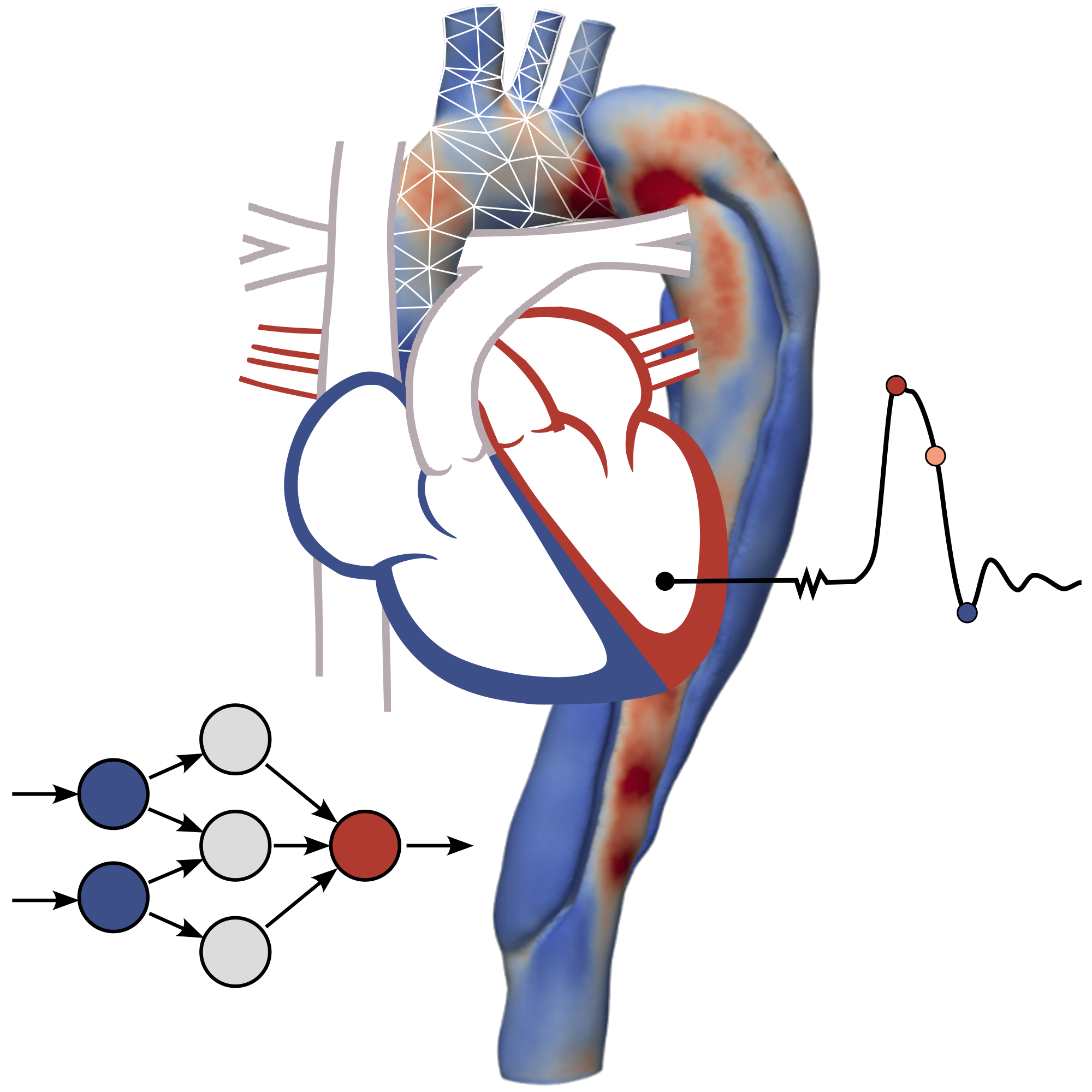
Summer School coordinated by:
Gerhard A. Holzapfel, Graz University of Technology, Austria
Ray W. Ogden, University of Glasgow, UK
This is the 11th Summer School on Biomechanics in the series we have organized since 2001. Its aim is to provide a state-of-the-art overview of physics-informed modeling, simulation and experiments on the cardiovascular system, the stomach and brain tissues.
The lectures will cover the key ingredients of continuum mechanics, focusing on nonlinear elasticity. Details of the mechanical and structural modeling of fiber-reinforced soft materials, and characterization of their properties will be explained along with an analysis of the influence of residual stresses and the cross-linking of collagen fibers. In addition, aortic dissection and related in silico models with fluid-structure interactions will be analysed. Machine learning and physics-based computational modeling for solving real-world mathematical problems will be discussed, including simulating cardiac function in both normal and diseased states. Benchmark tests based on the finite element method will be discussed with examples taken from collaborations with cardiologists.
There will also be a discussion of viscoelastic tissues and their modeling, in particular application of fractional viscoelasticity to models of the heart and arteries. A study is presented on the different effects between muscular and elastic arteries during aging. With a focus on biomechanics, machine learning and data-driven modeling are discussed. Attention is devoted to constitutive artificial neural networks. Homogenized constrained mixture theory with restricted mixing is provided. The biomechanics of stomach and brain tissues will also be analyzed. Experimental techniques for the determination of the mechanical properties of tissues, cells, cellular components, and proteins will be described. The area of parameter identification is covered by using full-field optical measurements with the virtual fields method in elasticity.
Future directions for research in physics-informed biomechanics and mechanobiology will be identified during the lectures. This offers significant challenges for the advancement of knowledge of mechanical, biological, electrical effects and fluid-structure interactions.
Audience
The Summer School is addressed to PhD students and postdoctoral researchers in biomedical engineering, biophysics, mechanical and civil engineering, applied mathematics and mechanics, materials science and physiology and more senior scientists and engineers (including some from relevant industries) whose interests are in the area of biomechanics and mechanobiology of soft biological tissues.
Preliminary Suggested Readings
S Avril. Hyperelasticity of soft tissues and related inverse problems, in: S Avril, S Evans, eds., Material Parameter Identification and Inverse Problems in Soft Tissue Biomechanics, CISM Courses and Lectures No. 573, International Centre for Mechanical Sciences, Springer, 2017, pp. 37-66 [link]
S Budday, TC Ovaert, GA Holzapfel, P Steinmann and E Kuhl. Fifty shades of brain. A review on the mechanical testing and modeling of brain tissue. Arch Comput Methods Eng, 27:1187–1230, 2020. [link]
R CJ Cyron, RC Aydin and JD Humphrey. A homogenized constrained mixture (and mechanical analog) model for growth and remodeling of soft tissue. Biomech Model Mechanobiol, 15:1389-1403, 2016. [link]
M Fedele, R Piersanti, F Regazzoni, M Salvador, PC Africa, M Bucelli, A Zingaro, L Dede and A Quarteroni. A comprehensive and biophysically detailed computational model of the whole human heart electromechanics. Comput Methods Appl Mech Engrg, 410:115983, 2023. [link]
GA Holzapfel, JA Niestrawska, RW Ogden, AJ Reinisch and AJ Schriefl. Modelling non-symmetric collagen fibre dispersion in arterial walls . J R Soc Interface, 12:20150188, 2015. [link]
GA Holzapfel, RW Ogden. An arterial constitutive model accounting for collagen content and cross-linking. J Mech Phys Solids, 136:103682, 2020. [link]
GA Holzapfel, RW Ogden. On fiber dispersion models: exclusion of compressed fibers and spurious model comparisons. J Elasticity, 129:49–68, 2017. [link]
GA Holzapfel, RW Ogden. On planar biaxial tests for anisotropic nonlinearly elastic solids. A continuum mechanical framework. Math. Mech. Solids, 14:474-489, 2009. [pdf]
B Lane, S Sherifova, VA Santamaría, J Molimard, GA Holzapfel and S Avril. Novel experimental methods to characterize the mechanical properties of the aorta, in: "Biomechanics of the Aorta", Academic Press, 2024, pp. 91-108 [link]
K Linka, M Hillgärtner, KP Abdolazizi, RC Aydin, M Itskov and CJ Cyron. Constitutive artificial neural networks: A fast and general approach to predictive data-driven constitutive modeling by deep learning. J Comput Phys, 429, 110010, 2021. [link]
R Miller, E Kerfoot, C Mauger, TF Ismail, AA Young, DA Nordsletten. An implementation of patient-specific biventricular mechanics simulations with a deep learning and computational pipeline. Front Physiol, 1398, 2021. [link]
SJ Mousavi, S Farzaneh, S Avril. Patient-specific predictions of aneurysm growth and remodeling in the ascending thoracic aorta using the homogenized constrained mixture model. Biomech Model Mechanobiol, 18:1895-1913, 2019. [link]
D Nordsletten, A Capilnasiu, W Zhang, A Wittgenstein, M Hadjicharalambous, G Sommer, R Sinkus, GA Holzapfel. A viscoelastic model for human myocardium. Acta Biomater, 135:441-457, 2021. [link]
RW Ogden. Nonlinear continuum mechanics and modelling the elasticity of soft biological tissues with a focus on artery walls, in GA Holzapfel, RW Ogden, eds., Biomechanics: Trends in Modeling and Simulation, Springer, 2016, pp. 83- 156. [pdf]
A Quarteroni, L Dede, A Manzoni and C Vergara. Mathematical Modelling of the Human Cardiovascular System. Data, Numerical Approximation, Clinical Applications. Cambridge University Press, 2019. [link]
M Rolf-Pissarczyk, R Schussnig, T-P Fries, D Fleischmann, JA Elefteriades, JD Humphrey and GA Holzapfel. Mechanisms of aortic dissection: from pathological changes to experimental and in silico models. Prog Mater Sci, in press. [pdf]
A Wineman. Nonlinear viscoelastic solids—a review. Math Mech Solids, 14:300-366, 2009. [pdf]
A W Zhang, M Jadidi, SA Razian, GA Holzapfel, A Kamenskiy and DA Nordsletten. A viscoelastic constitutive framework for aging muscular and elastic arteries. Acta Biomater, in press. [pdf]
Stéphane Avril
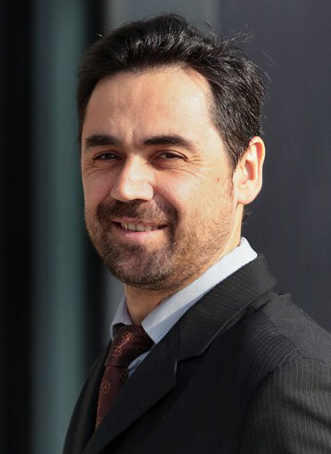 |
Mines Saint-Étienne Centre for Biomedical and Healthcare Engineering Saint-Étienne, France E-mail: avril@emse.fr |
Keywords:Parameter identification using full-field optical measurements; digital image/volume correlation; optical coherence imaging; virtual fields method; elastography; vascular remodeling and adaptation; mechanics of VSMCs; tensional homeostasis; mechanotransduction; mechanobiology of aneurysms; computer modeling of endovascular aneurysm repair |
Alain Goriely
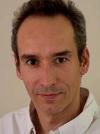 |
University of Oxford Website |
Keywords: Brain modeling; brain tissue and mechanics; neuromechanics; shaping of the brain and skull during development; axonal rheology; nonlinear inelasticity; morphogenesis; ageing; brain trauma and disease; multiphase theory; contact mechanics |
Gerhard A. Holzapfel
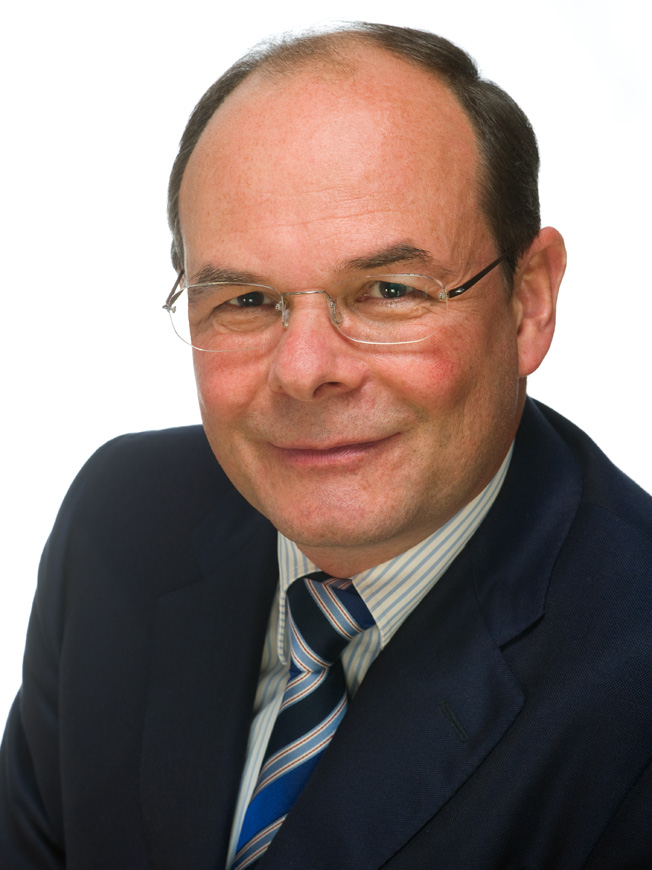 |
Graz University of Technology Website |
Keywords: Main aspects of mechanical/structural modeling of biological soft tissue; identification of collagen fiber dispersion and associated modeling, including fiber recruitment and damage – pros/cons; modeling/simulation aspects of aortic dissection; negative Poynting effect and its connection with collagen cross-links |
Ellen Kuhl
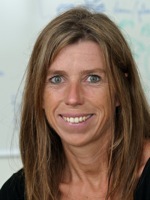 |
Stanford University Website |
Keywords: Automated discovery of models, parameters, and experiments for soft tissues; from continuum mechanics to constitutive artificial neural networks; comparing invariant and principal-stretch based networks; Bayesian networks, uncertainty quantification; discovering models, parameters, and experiments for brain, skin, and arteries |
David Nordsletten
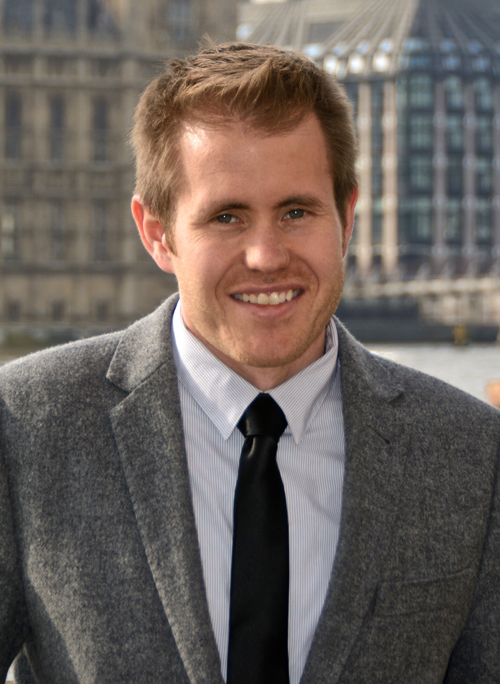 |
University of Michigan Website |
Keywords: Cardiac biomechanics; patient-specific modeling; image-based modeling; model personalization; data assimilation; biomechanics of engineered heart tissues; fractional viscoelasticity; numerical methods; finite element methods; hemodynamic modeling; fluid-structure interaction; elastography; relative pressure estimation |
Ray W. Ogden
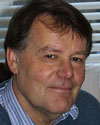 |
University of Glasgow Website |
Keywords: Continuum mechanics required for application to soft biological tissue constitutive modeling; fiber-reinforced materials, fiber dispersion, cross-linking; importance of residual stresses and their influence on the elastic response of arteries; modeling errors to be avoided |
This is the 10th Summer School on Biomechanics that we have organized in the series that started in 2001. The aim is to provide an up-to-date overview of biomechanical modeling, simulation and experimental methods on different length scales.
The lectures will include some essential ingredients of continuum mechanics, especially nonlinear elasticity. The focus is on the mechanical and structural modeling of fiber-reinforced materials, including collagen fiber dispersion with the inclusion of collagen cross-links and residual stresses. Applications to artery walls in health and disease such as aneurysms and aortic dissections will be illustrated. Lectures will also cover cardiac biomechanical modeling, touching on the nonlinear anisotropic and viscoelastic nature of the myocardium, the synthesis and integration of these concepts into whole-organ models, and the assimilation of image-based data for patient-specific modeling. Advanced topics on modeling the entire cardiovascular system, hemodynamics, engineered heart tissue and modeling will also be discussed. Vascular adaptation during disease and treatment will be discussed along with measurements of strain fields using imaging techniques and digital image correlation in soft tissues. The important area of parameter identification will be covered by full-field optical measurements using the virtual fields method in elasticity.
Another focus will be brain mechanics, including the unusual response of brain tissues and axons under loads, the shaping of the brain and skull during development, and the study of brain trauma and diseases. It will be shown that the gyrification patterns occurring in the human brain are the result of elastic instabilities. Finally, and most importantly, all participants will receive the code, datasets, and documented examples for brain, skin, and arteries, and may bring their own stretch-stress data for analysis.
Future directions and challenges will be identified in lectures for research in multiscale biomechanics and mechanobiology involving mechanical, biological, electrical and fluid-structure interactions.
Audience
The Summer School is addressed to PhD students and postdoctoral researchers in biomedical engineering, biophysics, mechanical and civil engineering, applied mathematics and mechanics, materials science and physiology and more senior scientists and engineers (including some from relevant industries) whose interests are in the area of biomechanics and mechanobiology of soft biological tissues.
Preliminary Suggested Readings
S Avril. Hyperelasticity of soft tissues and related inverse problems, in: S Avril, S Evans, eds., Material Parameter Identification and Inverse Problems in Soft Tissue Biomechanics, CISM Courses and Lectures No. 573, International Centre for Mechanical Sciences, Springer, 37-66 [link]
S Avril, MW Gee, A Hemmler, S Rugonyi. Patient‐specific computational modeling of endovascular aneurysm repair: State of the art and future directions. Int J Numer Method Biomed Eng, 37:e3529, 2021. [link]
R Chabiniok, VY Wang, M Hadjicharalambous, L Asner, J Lee, M Sermesant, E Kuhl, AA Young, P Moireau, MP Nash, D Chapelle. Multiphysics and multiscale modelling, data–model fusion and integration of organ physiology in the clinic: ventricular cardiac mechanics. Interface focus, 6:20150083, 2016. [link]
A Goriely, S Budday, E Kuhl. Neuromechanics: from neurons to brain. Adv Appl Mech, 48:79-139, 2015. [link]
A Goriely, MGD Geers, GA Holzapfel, J Jayamohan, A Jérusalem, S Sivaloganathan, W Squier, JAW van Dommelen, S Waters, E. Kuhl. Mechanics of the brain: perspectives, challenges, and opportunities. Biomech Model Mechanobiol, 14:931-965, 2015. [link]
GA Holzapfel, RW Ogden. An arterial constitutive model accounting for collagen content and cross-linking. J Mech Phys Solids, 136:103682, 2020. [link]
GA Holzapfel, RW Ogden. On fiber dispersion models: exclusion of compressed fibers and spurious model comparisons. J Elasticity, 129:49–68, 2017. [link]
GA Holzapfel, RW Ogden, S Sherifova. On fibre dispersion modelling of soft biological tissues: a review. Proc Royal Soc A, 475:20180736, 2019. [link]
K Linka, A Buganza Tepole, GA Holzapfel, E Kuhl. Automated model discovery for skin: Discovering the best model, data, and experiment. doi:10.1101/2022.12.19.520979, 2023. [pdf]
K Linka, SR St Pierre, E Kuhl. Automated model discovery for human brain using constitutive artificial neural networks. doi:10.1101/2022.11.08.515656, 2023. [pdf]
R Miller, E Kerfoot, C Mauger, TF Ismail, AA Young, DA Nordsletten. An implementation of patient-specific biventricular mechanics simulations with a deep learning and computational pipeline. Front Physiol, 1398, 2021. [link]
SJ Mousavi, S Farzaneh, S Avril. Patient-specific predictions of aneurysm growth and remodeling in the ascending thoracic aorta using the homogenized constrained mixture model. Biomech Model Mechanobiol, 18:1895-1913, 2019. [link]
D Nordsletten, A Capilnasiu, W Zhang, A Wittgenstein, M Hadjicharalambous, G Sommer, R Sinkus, GA Holzapfel. A viscoelastic model for human myocardium. Acta Biomater, 135:441-457, 2021. [link]
RW Ogden. Nonlinear continuum mechanics and modelling the elasticity of soft biological tissues with a focus on artery walls, in GA Holzapfel, RW Ogden, eds., Biomechanics: Trends in Modeling and Simulation, Springer, 2016, pp. 83- 156. [pdf]
C Petit, AA Karkhaneh Yousefi, O Ben Moussa, JB Michel, A Guignandon, S Avril. Regulation of SMC traction forces in human aortic thoracic aneurysms. Biomech Model Mechanobiol, 20:717-731, 2021. [link]
S Teichtmeister, GA Holzapfel. A constitutive model for fibrous tissues with cross-linked collagen fibers including dispersion – with an analysis of the Poynting effect. J Mech Phys Solids, 164:104911, 2022. [link]


